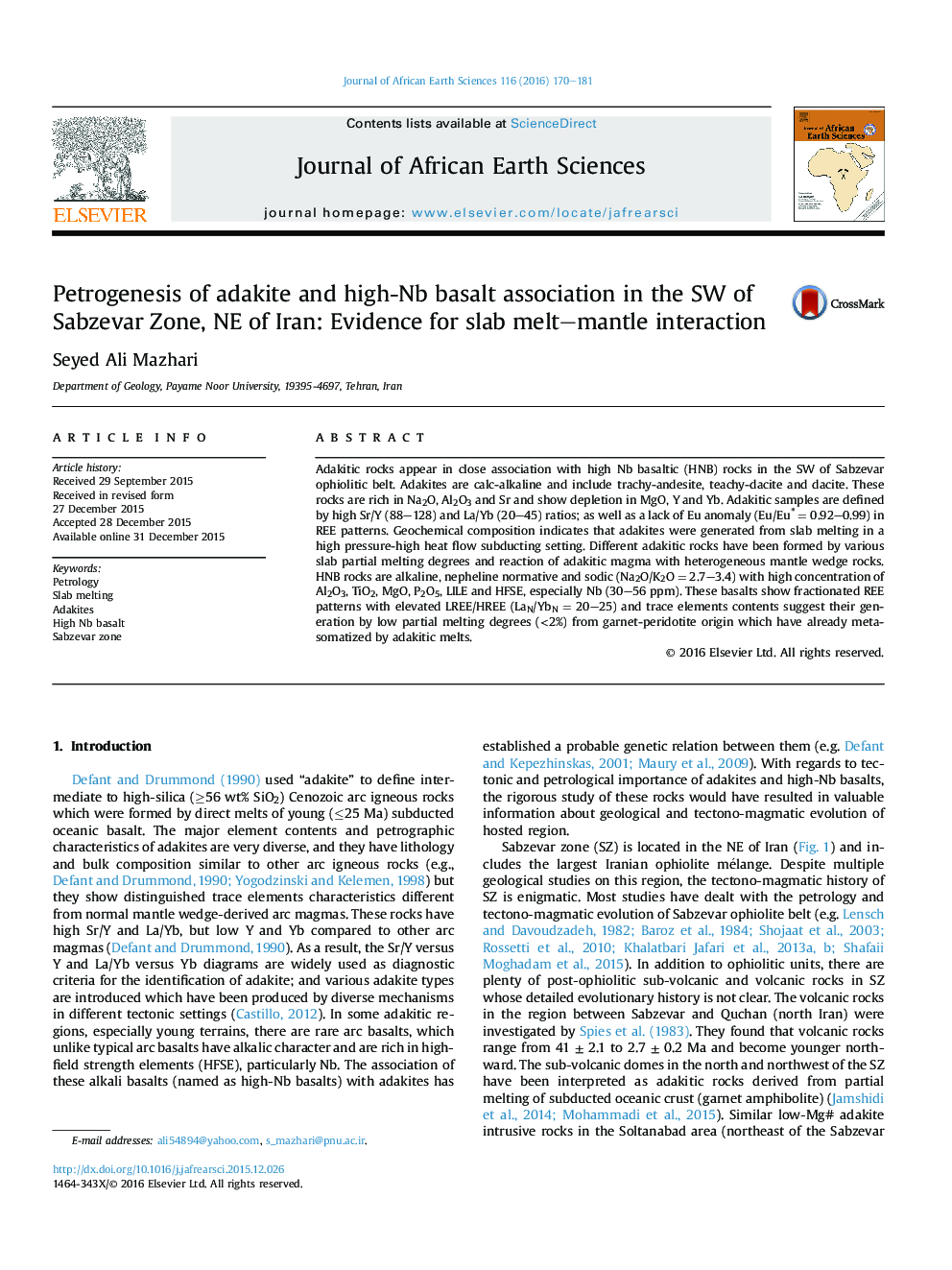| Article ID | Journal | Published Year | Pages | File Type |
|---|---|---|---|---|
| 4728299 | Journal of African Earth Sciences | 2016 | 12 Pages |
•Adakites and high Nb basalts (HNB) are magmatic rocks in the SW of Sabzevar Zone.•Adakitic rocks were formed by slab melting in a subducting setting.•HNB was formed by low partial melting degrees from garnet-peridotite origin.•HNB was already metasomatized by adakitic melts.
Adakitic rocks appear in close association with high Nb basaltic (HNB) rocks in the SW of Sabzevar ophiolitic belt. Adakites are calc-alkaline and include trachy-andesite, teachy-dacite and dacite. These rocks are rich in Na2O, Al2O3 and Sr and show depletion in MgO, Y and Yb. Adakitic samples are defined by high Sr/Y (88–128) and La/Yb (20–45) ratios; as well as a lack of Eu anomaly (Eu/Eu∗ = 0.92–0.99) in REE patterns. Geochemical composition indicates that adakites were generated from slab melting in a high pressure-high heat flow subducting setting. Different adakitic rocks have been formed by various slab partial melting degrees and reaction of adakitic magma with heterogeneous mantle wedge rocks. HNB rocks are alkaline, nepheline normative and sodic (Na2O/K2O = 2.7–3.4) with high concentration of Al2O3, TiO2, MgO, P2O5, LILE and HFSE, especially Nb (30–56 ppm). These basalts show fractionated REE patterns with elevated LREE/HREE (LaN/YbN = 20–25) and trace elements contents suggest their generation by low partial melting degrees (<2%) from garnet-peridotite origin which have already metasomatized by adakitic melts.
